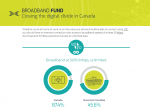Price isn’t the only factor driving many consumer purchasing decisions, and telecom services are no different.
We know that quality and coverage are important factors as well. People are willing to pay more for faster speeds, greater reliability, and a host of other factors [see “Competition brings out the best”]. That isn’t to say price isn’t important. All else being equal, who doesn’t want to save money?
The thing is, all else is rarely equal.
Whether shopping for shoes, groceries, cars, clothes, telecom services or whatever, quite frequently, all else isn’t equal. As consumers, often there are other factors at play.
We might deal with the same car dealer years after our last purchase, or stick with the same brand of car. We find stores that we like – for a variety of reasons – and continue to deal with them, even if the price isn’t always the lowest. Maybe we have found the store employees are friendlier; or, the grocery store’s produce is fresher; or, the meat seems better.
The lowest price isn’t always the deciding factor.
We often speak of the regulatory and policy tension in balancing quality, coverage and price for telecommunications services [see, for example “Value, affordability and investment”].
It has become popular to use the term “affordability” to refer to the service offerings of the wholesale-based service provider community. That is misleading and wrong. Doing so is hijacking the term “affordability”.
As I have discussed before, the households that truly need the greatest assistance with finding affordable telecom services have access to programs such as Connecting Families [newly improved with version 2.0, see “Is there a better approach to affordable telecom service?”], Rogers’ Connected for Success, or TELUS’ Internet for Good.
The marginally lower priced offerings from wholesale-based service providers simply don’t offer such affordable options for those most vulnerable Canadian households. Indeed, it is doubtful the reseller community could compete with these truly affordable services, even if the CRTC’s flawed 2019 wholesale internet rates decision is restored.
As I suggested recently, there may be a better approach to affordable telecom service.
It is disappointing to see a singular focus on price as the sole defining factor in determining the public interest.
The CRTC, and the federal cabinet, recognized the need to “appropriately balance the objectives of the wholesale services framework”, and acknowledged that the 2019 rates would “undermine investment in high-quality networks”.
The CRTC, and Cabinet recognized that quality, coverage and price work together as public interest considerations. Expanding service to unserved or underserved areas needs private sector investment.
These factors impacting consumers, and the tension between them, show the complex nature of the public interest.
Politicians need to consider the multi-dimensional considerations associated with consumer interests. Consumers have demonstrated that purchase decisions are more sophisticated than simply looking at price.


